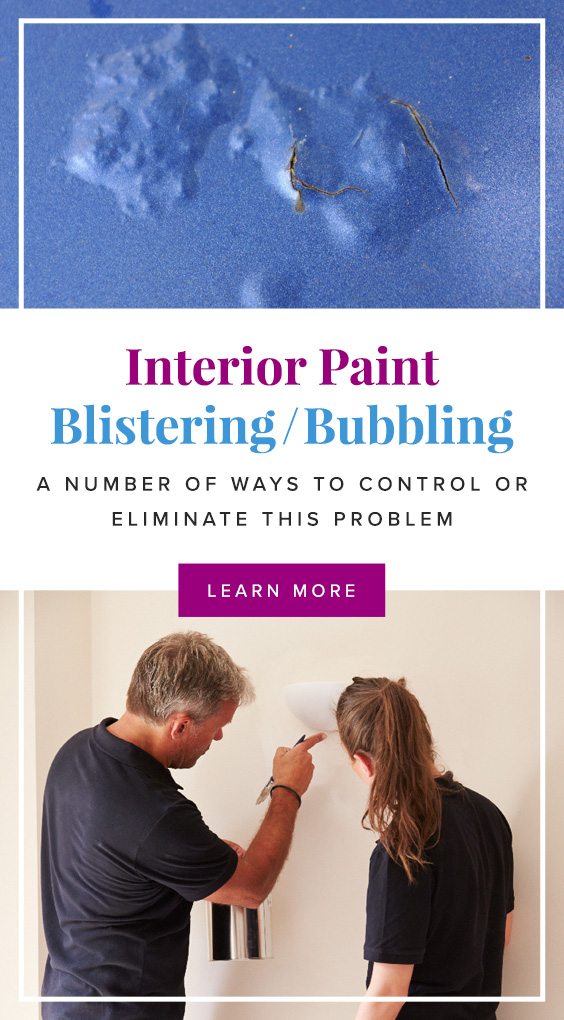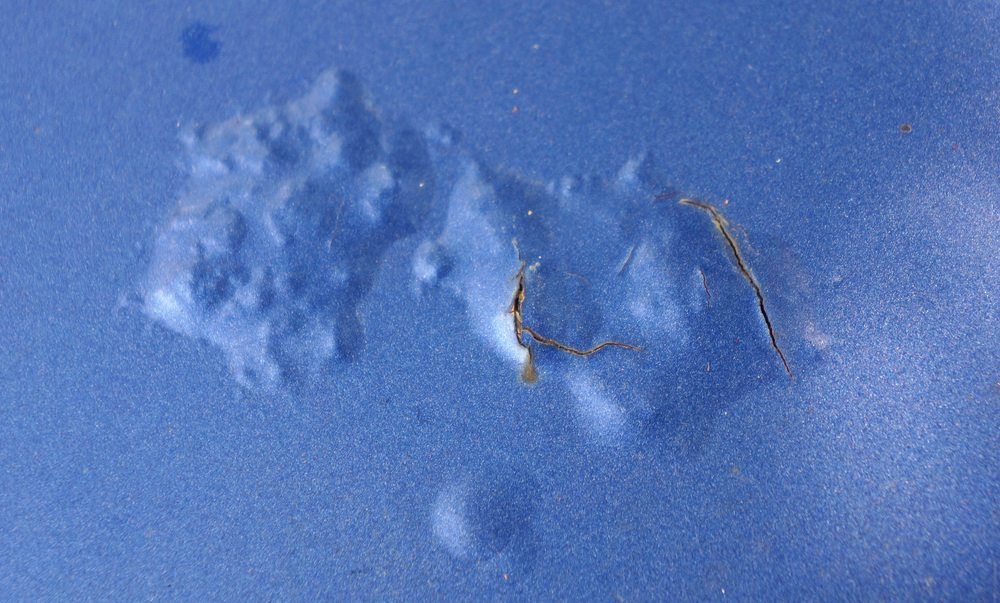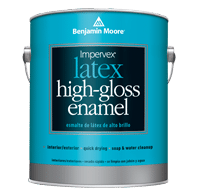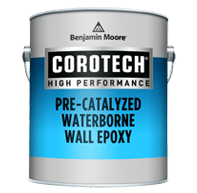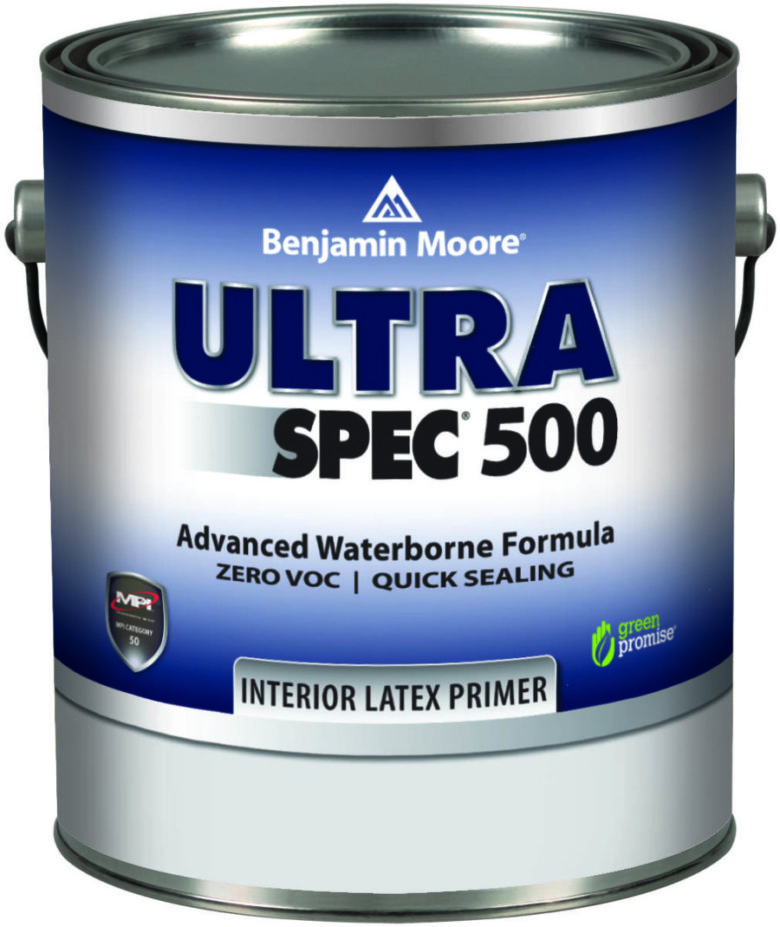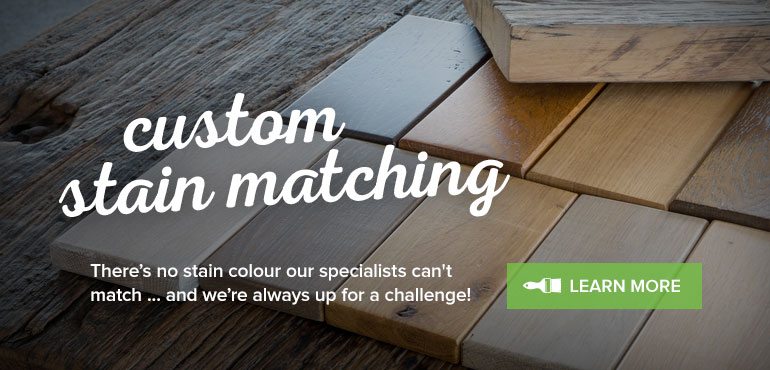One of the more unusual paint problems we encounter is “substrate related” paint blistering or bubbling. This differs from the more common type of foaming problem produced by excessive shaking or application vigor. This report will define the problem, describe the conditions that support the phenomenon, and suggest steps to minimize the problem.
Painters usually discover substrate related blistering in the following way. Only after the application of the second topcoat does the paint start bubbling or blistering, usually only seconds after the roller has been lifted off the wall. The size of these blisters varies between 1/8 to 1 inch in diameter and they seem to grow right before the painter’s eyes.
A wall that has been mudded with spackle is most likely to cause this problem.
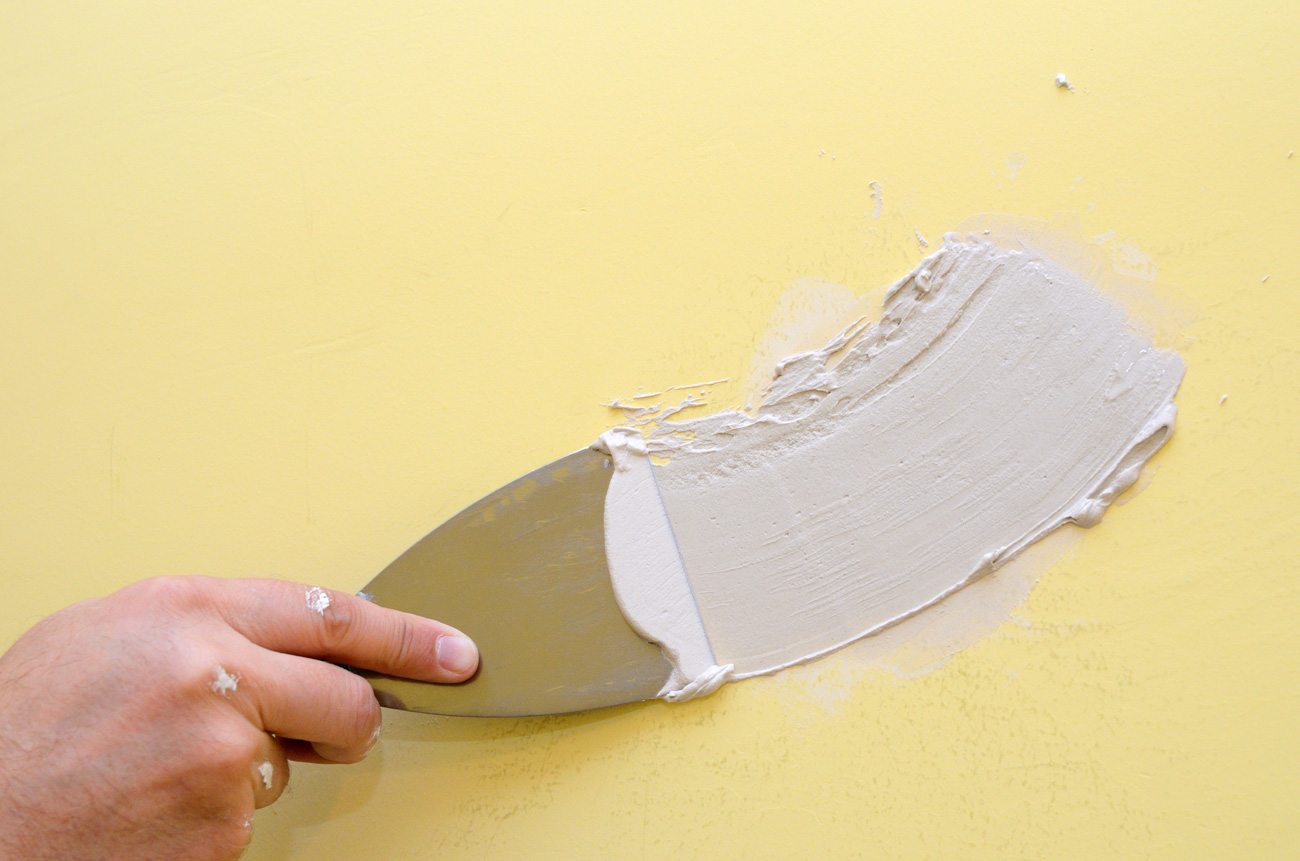
Spackle can be the cause of blistering.
The primer coat produced no blisters and neither did the first coat of topcoat.
A unique characteristic of these types of blisters is that they appear to be under a lot of pressure and, if they are left to dry and then cut open, you’ll find that the air bubble has lifted all the coats of paint off the wall, including the primer: The back of the bubble film will be white (the primer colour) and you’ll see clean drywall compound on the wall surface.
This type of blistering differentiates itself from more common paint foaming in that the source of the air producing the blister does not come from the can of paint, or from the agitation the paint receives during application. I’m pretty sure that every experienced painter will know if he or she is applying foamy paint.
We believe that the blisters are formed with air that escapes from tiny fissures or cracks in the skim coated wall below the layers of applied paint.
Under low humidity drying conditions, drywall mud and skim coat will shrink to such an extent that tiny cracks will form on the surface. Extreme cases will resemble the mud cracking of a riverbed. Usually these tiny cracks in the mud will not even be visible to the eye but they will contain a significant volume of air.
When water based paints are applied to this cracked surface strong capillary forces move the water into these fissures. In nature these same forces are responsible for moving water from the roots of a tree up to the uppermost leaves. As water enters these fissures air is expelled from them but in most instances this air can find a path out of the film with no ill effect. When the air is forced up under a wet paint film the bubbles break and the paint flows back together again. Defoaming additives are regularly added to latex paint to facilitate this air release process.
Primers don’t pose much of a problem either, since they are fairly porous and will let water, and air, pass through them easily.
The problem becomes serious only if dried paint layers are present to form an impermeable barrier to the air escaping from these cracks. These conditions are usually satisfied with premium eggshell or higher gloss latex paints.
Nothing usually happens when the first coat of topcoat is applied. Any air coming from the drywall compound fissures will just bubble through the wet film. After a few hours the cracks in the mud also dry out. However, when the next top coat is applied, water can penetrate down through the layers to force air out of the fissure again. Air pressure builds under the film and it is forced up to form a blister as shown in the following diagram on the next page.
What causes the fissures to form in the drywall compound? We don’t know for sure. Low humidity may be a factor and since excessive shrinkage causes the fissures, any addition of water to the drywall compound will only make matters worse. Some contractors have been known to add soapy water to the compound to aid in the smoothing of the material. Unfortunately this also helps stabilize micro bubbles in the compound. Once these fissures have been formed they will plague the homeowner forever. The water will eventually evaporate from the fissures and by the time of the next paint job they will be ready to produce blisters all over again.
Since this blistering mechanism is initiated only by the water in the topcoat any water based paint could cause blisters on a susceptible skim coated or patched surface. There are, however, a number of ways to control or eliminate this phenomenon. Before painting any previously painted wall with a latex paint carefully examine it for evidence of substrate related blistering in the past. Any deflated blisters should be easy to spot. If none are visible chances are you’ll be OK. If you do see evidence of old blisters, the most effective remedy is to prime with an oil based primer/sealer. This will seal the film and prevent water from migrating into the fissures below. Once this is done you should have no problem top coating with the latex paint of your choice.
Peter Umanec
Benjamin Moore & Co. Ltd.
